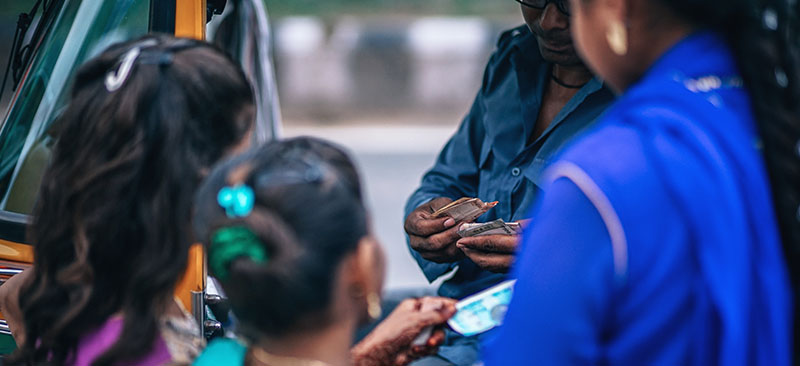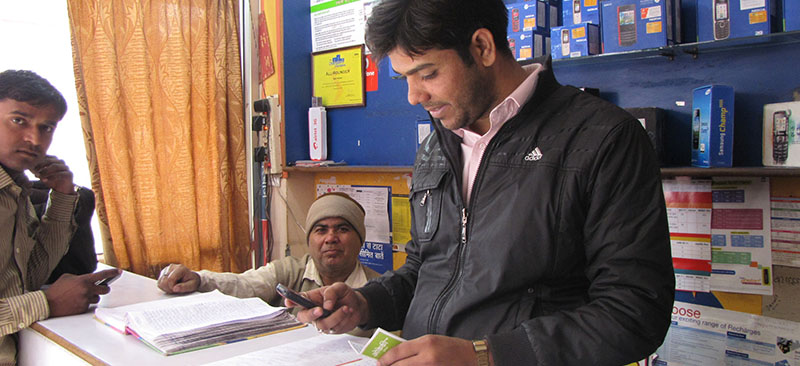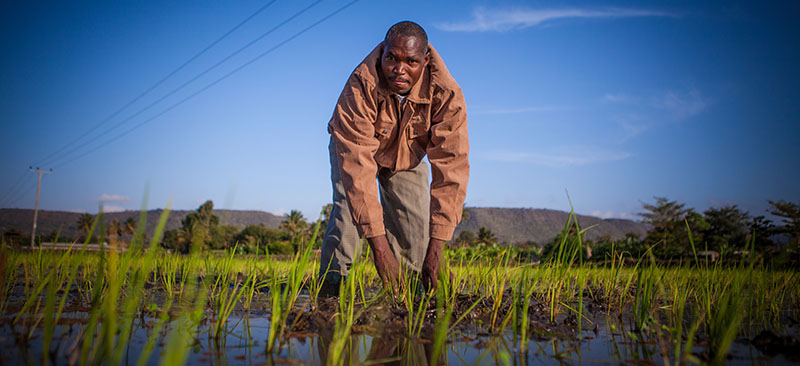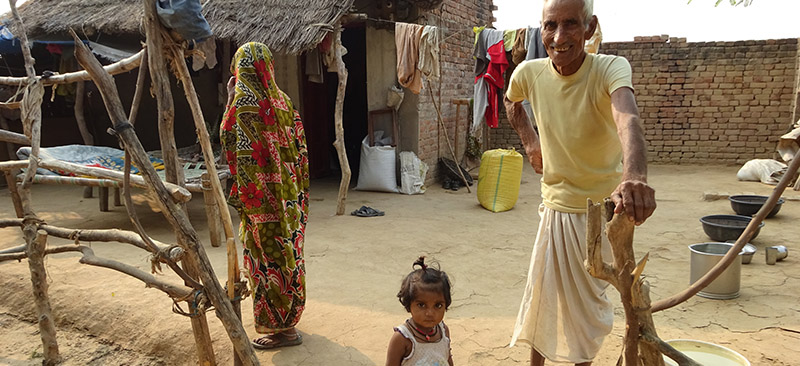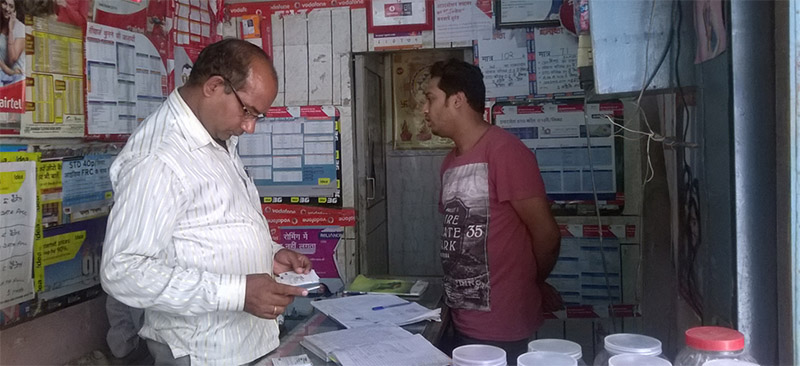KYC harmonization study was undertaken to analyze the existing Know Your Customer (KYC) practices of first-time customer on-boarding by service providers (Banks, Mobile Network Operators, Mobile Money Operators, and Pre-paid Payment Instrument issuers) with respect to the prevailing regulatory landscape.
Blog
Leveraging Fintech to Achieve Financial Inclusion in Indonesia
Click here to read the blog in Bahasa Indonesia
“Fintech” – an intersection of financial services and technology – is taking the traditional financial world by storm. Indonesia is no exception, with a fast-evolving ecosystem that includes a host of financial services offered by new generation fintechs.
The diagram below, by no means exhaustive, highlights a few of the fintech players covering a myriad of financial services like payments, credit, savings, insurance, and financial management.
Indonesia – Perfectly Placed to Reap “Fintech”
Indonesia is the fourth largest mobile market in the world with 339.9 million connections – a SIM penetration of 131%! 43% of Indonesians already own a smartphone. Furthermore, Indonesia is going “mobile-first” with 64.1 million out of a total of 88.1 million users accessing Internet through mobile devices. This is fuelling social media usage by platforms such as WhatsApp, Facebook, Blackberry, Line, Path, etc. This trend is also leading to explosive growth in electronic and mobile commerce, with big names such as Alibaba, Softbank, Sequoia, Rocket Internet, and Temasek backing local ventures. In contrast, only 36% of 250 million Indonesians have access to formal financial services.
Keeping these technological advancements in context, Indonesia is well placed to leverage “fintech” towards the cause of financial inclusion. Fintech innovations are providing a range of new opportunities to dramatically change four main financial service areas – payments, remittances, credit and deposit-taking.
Leveraging Savings
Without access to formal financial services, many poor Indonesians continue to utilise informal services such as Arisan (ROSCAs), package saving schemes, and savings with individual agents.1 The bank deposit-to-GDP ratio in Indonesia (an indicator of deposit mobilisation) stands at 34.55% – much lower than Malaysia (130.25%), Cambodia (42.97%), and the Philippines (54.38%). This presents a big opportunity to all financial service providers, but especially new fintech players.
If we look at examples from other countries, Equity Bank in Kenya is one of the best examples of deposit mobilisation through digital banking services. After starting agency banking in 2011, the bank now mobilises 20%2 of its total deposits through a channel network of 25,388 agents, spread across the country. A dedicated team focusing on agency banking business and a client-centric business model based on the philosophy of “listening to customers” has made this possible. Other examples include, M-Pawa’s interest-bearing savings account in Tanzania, developed in collaboration between Vodacom and CBA and the Lock Savings Account offered to M-Shwari users in Kenya, where clients can move money from their M-Pesa account to save through a fixed deposit account that earns higher rates of interest.
Other examples include rural banks in the Philippines which were one of the first financial service providers to offer SMS reminders for commitment savings that allowed for dramatic increases in savings rates.3 This has been followed by new fintech players supporting banks to support increased savings behaviours in low-income customers such as Juntos. Similarly, there is also a significant potential to utilise SMS technology and/or messaging platforms to support goal-based savings in Indonesia. A case in point, is the common practice of saving to meet expenditures for major religious events like Ramadan.
Enabling Payments
A booming e-commerce sector, fuelled by large international investors, needs an intuitive online and offline payments infrastructure. However, a 2015 Bank Indonesia study documented that 89.7% of the transactions in Indonesia are in cash. This provides a tremendous opportunity. Consider the following payment process for purchase through a leading e-commerce portal for those with bank accounts:
Navigation through multiple websites makes the payment process clumsy, leading to poor user experience. In addition, it limits payment options to those with bank accounts or provides cash-on-delivery options which are costly to operators. Using mobile/electronic wallets for payments, an option available for leading e-commerce portals such as Tokopedia and Elevania, can provide seamless experience to customers and reduced expenses for operators.
Further, offline payments through mobile/electronic wallets also present a significant use case. Kopokopo―a leading merchant aggregator in East Africa with more than 10,000 merchants―is a successful example of providing a mobile-based small value merchant payment platform. Apart from acquiring merchants, the organisation focuses on providing value-added services such as merchant cash advances, transaction analysis tools, and merchant/customer engagement initiatives to ensure merchants remain active. Easypaisa in Pakistan and PayTM in India are other notable examples for merchant payments. Closer home – players like TCash, Tapp Commerce and Dimo Pay are catching up fast. The idea is to integrate the payment and financial service habits of users through a single e-wallet/account. This could then be used for a variety of payments whether making purchases online, pay for Gojek/Uber, restaurant bills, or bill payments.
Easing Remittances
Remittances–both domestic and international–are a big market in Indonesia. However, most domestic remittances are largely informal and cash based. In a research conducted by Gallup, 50% of the Indonesians said that they sent money to their family or friends in the preceding 12 months, in “cash”. An average of US$ 87.40 is sent about 1.6 times a month! Evidently, a huge untapped market waiting to be facilitated via fintech players. This is especially relevant to mobile/e-money users where 71.5% of all transactions (by value) are person-to-person transfers.
Indonesia provides a US$10.5 billion international remittance market – an opportunity for new fintech players to add value to a market heavily dominated by money transfer operators such as Western Union. This is especially the case with remittance prices, averaging 5% to 8.60% of the amount sent.4 Notable fintech players in this segment such as WorldRemit have already partnered with Dompetku – a mobile money service offered by Indosat Ooredoo. However, there is a compelling need for focused players to cater to Indonesian migrant workers, predominantly based in Malaysia, Taiwan, Saudi Arabia, Hong Kong, Singapore, and the United States.
The World Bank estimates that only 13.1% of the Indonesians have borrowed from a formal financial institution. Further, domestic credit to GDP ratio in Indonesia is 43.5%, lower than its neighbours including Malaysia (140.5%), Vietnam (113.8%), the Philippines (55.8%) and China (169.3%). Online, fintech-based lending can play a pivotal role in narrowing this credit gap. Micro and MSME loans based on alternate credit assessment models are growing across the developing world.
Mshwari in Kenya offers small/instant loans in collaboration with Commercial Bank of Africa (CBA). Credit assessment is built on data generated on the basis of airtime usage, M-Pesa usage, length of association, etc. Tigo Tanzania (Tigo Nivushe), MTN Ghana (Mjara loans) and Equity Bank (Eazzy loan) are other examples of this model.
Given the market size in Indonesia, there is huge scope for growth. Following global cues, fintech credit players such as Uang Teman, Mekar, and Modalku have already emerged in Indonesia.
Going Forward – Think Global, Act Local!
As the Government of Indonesia looks at rapidly expanding financial inclusion, we see that innovations can help to leapfrog toward this goal. With the continued growth of mobile users, the growing shift to smartphones and the advances of fintech solutions, we see opportunities to provide value-based financial access and services for all Indonesians. New technologies that are driving savings adoption, access to credit, faster payments and cheaper remittances across the world, can also drive financial inclusion across Indonesia at a much faster rate than over the past several decades. It is up to the government, policy-makers, regulators and the industry players to embrace and enable these new developments in order to help Indonesia to become one of the fastest growing financially inclusive markets in the world.
[1] Refer to MicroSave blog on: Lessons from Informal Financial Systems: Indonesian Perspective
[2] Total deposit mobilisation= KES 62.8 billion; deposits through agency channel = KES 317 billion (performance as of Q3 2015)
[3] http://karlan.yale.edu/sites/default/files/top-of-mind-oct2014.pdf
[4] Average cost of sending money from countries such as Saudi Arabia and Unites States: https://remittanceprices.worldbank.org/
Agent Network Accelerator survey: Bangladesh report 2016
Based on over 2000 agent interviews conducted between March and April 2016, the ANA Bangladesh report, funded by the Bill & Melinda Gates Foundation and the United Nations Capital Development Fund (UNCDF) highlights findings on the DFS agent landscape in Bangladesh covering agent profitability, transaction volumes, liquidity management and other important strategic considerations.
The findings highlight that Bangladeshi providers continue to offer superior liquidity and agent network management services and agents are more profitable and optimistic than they were in 2014. The number of DFS providers has increased, however, the market is still anticipating sophisticated products. Though the market is in nascent stages, third party agent network managers are performing well on operational metrics such as training and service downtime. The newly introduced bio-metric identity registration of SIM cards, which has initially decreased DFS accounts, will likely influence agents’ behaviours towards the illegal over-the-counter (OTC) transaction methodology and customer enrollments. This may spur changes in providers’ agent network management practices. Please click the download button to read the full report.
Private Sector Engagement in Financial Inclusion
“As per Global Findex Database 2014, 2 billion adults – about two out of five of the word’s adults – do not have access to formal financial services. Families at the base of the pyramid need financial services to manage economic decisions and risks. Financial services must extend well beyond just payments or indeed the traditional microcredit. There is a real risk that the very poor at the base of the socio-economic pyramid are excluded from digitally-enabled financial inclusion because they are unable to afford or use the mobile handsets or data packages to transact.
Financial inclusion in present times is seen as a viable business opportunity by private sector. If Governments create an enabling environment, the private sector will leverage digital technology to meet the needs of the majority of the currently unbanked / under-banked.
Governance is the Weight Around MGNREGS’s Neck: Technology May Offer a Way Out
Mahatma Gandhi National Rural Employment Guarantee Scheme (MNREGS) is the world’s largest public employment generation scheme with a budget of US$ 6 billion per annum. Despite its enormous potential and the safety net it provides, questions about the programme remain. However, MicroSave’s experience, gained through engagement with the deployment of MGNREGS across various states, highlights that lack of focus on governance and/or the inadequate administrative capacity of state governments, limits potential of the programme. They can achieve this by automating a few key processes. Given disproportionate impact, states should not miss the opportunities provided by relative simple applications of technology to optimise the administration of MGNREGS.
Institutionalising Social Performance Management In Financial Institutions: What Does It Take? – Part 2
Implementing social performance management (SPM) in microfinance institutions (MFIs) has challenges. MicroSave has considerable experience in implementing SPM in MFIs across Africa and Asia. We feel that unless there is adequate support from the Board and the senior management of the MFI, SPM initiatives do not move smoothly. Our understanding is that the effective implementation of SPM initiatives in any MFI is possible only when all these four pillars work in unison: Board commitment and support, management involvement and commitment, staff buy-in and adequate investment in resources. It is these 4 elements which differentiate an MFI with good SPM initiatives (working) versus a not so successful one.
The Part 2 of this Briefing Note (BN) explains the last two pillars viz. staff involvement and investment in resources. Please see the Part 1 of this Briefing Note (BN) which explains the first two pillars viz. Board commitment and management’s role.
However a key point which needs to be kept in mind is that the benefits / fruits of SPM are not immediate. Building SPM oriented products and processes takes time but it is worth the effort.
